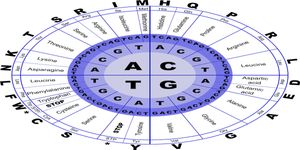Tackling the Problem of Toxicity in Breast Cancer Therapy
Chemotherapy has been one of the primary methods of cancer treatment for decades. Usually, a doctor applies a chemotherapy drug pre- or post-surgery to prevent recurrence in a patient. However, chemotherapy has always come with toxicity issues, a problem that scientists intend to tackle head-on.
HER2+ breast cancer is a common subtype of breast cancer with a standard treatment of chemotherapy with trastuzumab and doxorubicin. This combination can induce remission in up to fifty percent of patients. The problem is that doxorubicin is quite toxic, and both components are needed to obtain the high remission rate.
One group from Universita di Milano in Italy hypothesized that they could modify doxorubicin with a protein called H-ferritin and suppress doxorubicin's toxic effects. H-ferritin brings the attached doxorubicin (HFn-DOX) to tumors by binding to a surface receptor overexpressed in breast cancer cells, preventing it from reaching off-target sites and causing harmful effects. Previous studies have shown this doxorubicin variant reduces toxicity in other breast cancers. This study sought to determine if the combination had the same impact in Her2+ breast cancer.
They began by examining if there was a difference between trastuzumab, doxorubicin, or HFn-DOX alone or in combination in a mouse model. The HFn-DOX outperformed doxorubicin in both single and combination tests. It elicited a similar anti-cancer effect as trastuzumab alone and combined with trastuzumab provided the best anti-cancer effects.
They then measured the toxicity of the HFn-DOX with trastuzumab to determine if it was safer than doxorubicin. Previous work by the group had already shown that HFn-DOX alone was far less toxic than doxorubicin. With trastuzumab, it actually decreased the expected toxicity. Trastuzumab has some toxicity associated with its use, so this was a surprising result. Further investigation identified that when trastuzumab was cotreated with DOX or hFn-DOX, it accumulated in tumors to a higher degree. This prevented its accumulation in off-target organs, and the toxicity effects that followed.
The team theorized that HFn-DOX could somehow open up HER2+ tumors to be targeted by trastuzumab. This study could not elaborate further, but supports HFn-DOX/trastuzumab combination therapy as a possible replacement for the current standard. Further studies may reveal the mechanism behind this effect, and maybe even outline an effective chemotherapy to achieve the same fifty percent remission- minus the toxic side effects.
Sources: Nature Scientific Reports, Targeted Oncology









